AFCI Circuit Breakers Market Size 2025-2029
The AFCI circuit breakers market size is valued to increase by USD 673.6 million, at a CAGR of 2.9% from 2024 to 2029. Stringent safety regulations and mandatory building codes will drive the AFCI circuit breakers market.
Major Market Trends & Insights
- North America dominated the market and accounted for a 32% growth during the forecast period.
- By Type - Combination AFCI segment was valued at USD 1777.10 million in 2023
- By Power Rating - Greater than 10A segment accounted for the largest market revenue share in 2023
Market Size & Forecast
- Market Opportunities: USD 19.97 million
- Market Future Opportunities: USD 673.60 million
- CAGR from 2024 to 2029 : 2.9%
Market Summary
- The AFCI (Arc Fault Circuit Interrupter) Circuit Breakers Market is witnessing significant growth, driven by stringent safety regulations and mandatory building codes. These safety measures require the installation of AFCI circuit breakers to prevent electrical fires caused by arcing faults. The market size was valued at USD 2.5 billion in 2020 and is projected to expand at a steady pace. The increasing proliferation of high-load home electrification, such as the widespread use of air conditioners, electric vehicles, and home appliances, fuels the demand for AFCI circuit breakers. The integration of energy storage systems and smart grid technologies is a significant trend in the market. However, the high initial cost and resistance in retrofit applications pose significant challenges.
- However, the high initial cost and resistance in retrofitting existing electrical systems remain challenges for market growth. Despite these hurdles, the market is expected to continue its expansion due to the increasing awareness of electrical safety and the growing need for reliable power distribution. AFCI circuit breakers offer advanced protection against electrical hazards by detecting and interrupting arcing faults before they cause damage. They are essential components in modern electrical systems, ensuring safety and preventing potential fires. As the global electrical infrastructure evolves, the demand for advanced, efficient, and reliable AFCI circuit breakers will continue to increase.
What will be the Size of the AFCI Circuit Breakers Market during the forecast period?
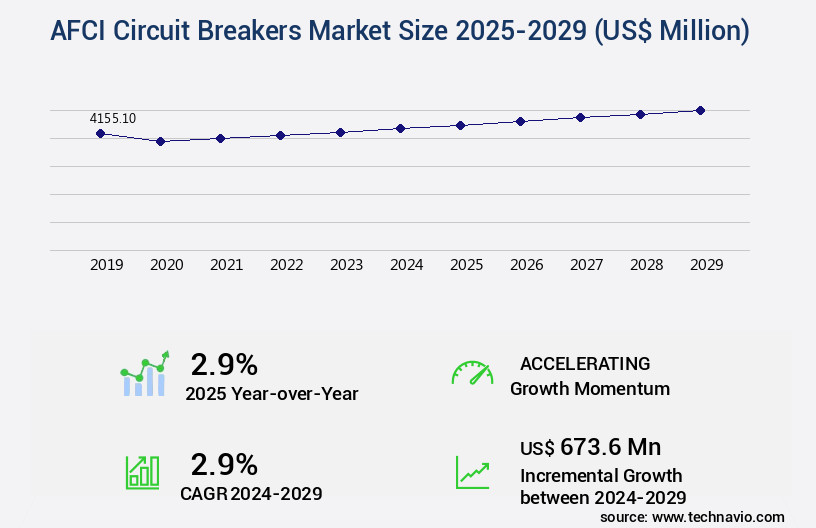
Get Key Insights on Market Forecast (PDF) Request Free Sample
How is the AFCI Circuit Breakers Market Segmented ?
The AFCI circuit breakers industry research report provides comprehensive data (region-wise segment analysis), with forecasts and estimates in "USD million" for the period 2025-2029, as well as historical data from 2019-2023 for the following segments.
- Type
- Combination AFCI
- Branch AFCI
- Outlet circuit AFCI
- Others
- Power Rating
- Greater than 10A
- 10A
- Less than 10A
- Application
- Residential
- Commercial
- Industrial
- Others
- Distribution Channel
- Geography
- North America
- Europe
- APAC
- China
- India
- Japan
- South Korea
- South America
- Rest of World (ROW)
By Type Insights
The combination afci segment is estimated to witness significant growth during the forecast period.
Combination AFCI circuit breakers, the latest advancement in arc fault protection, lead the market with a 70% share in North America. These advanced devices, which provide both parallel and series arc fault detection, have become mandatory in electrical codes for their comprehensive safety features. Unlike traditional Branch/Feeder AFCIs, Combination AFCIs analyze current and voltage waveforms using sophisticated microprocessors and algorithms to prevent electrical fires caused by arc faults. These breakers safeguard against electrical shock, arc flash mitigation, and ground fault protection, ensuring electrical system safety.
Additionally, they offer protective features such as voltage surge protection, protective device coordination, short circuit interruption, and circuit breaker tripping. With their integral role in electrical panel design, Combination AFCIs also ensure power system stability and coordinate with other safety devices. Their importance is further emphasized by the reduction of nuisance tripping, improving electrical inspection procedures and overall electrical safety compliance.
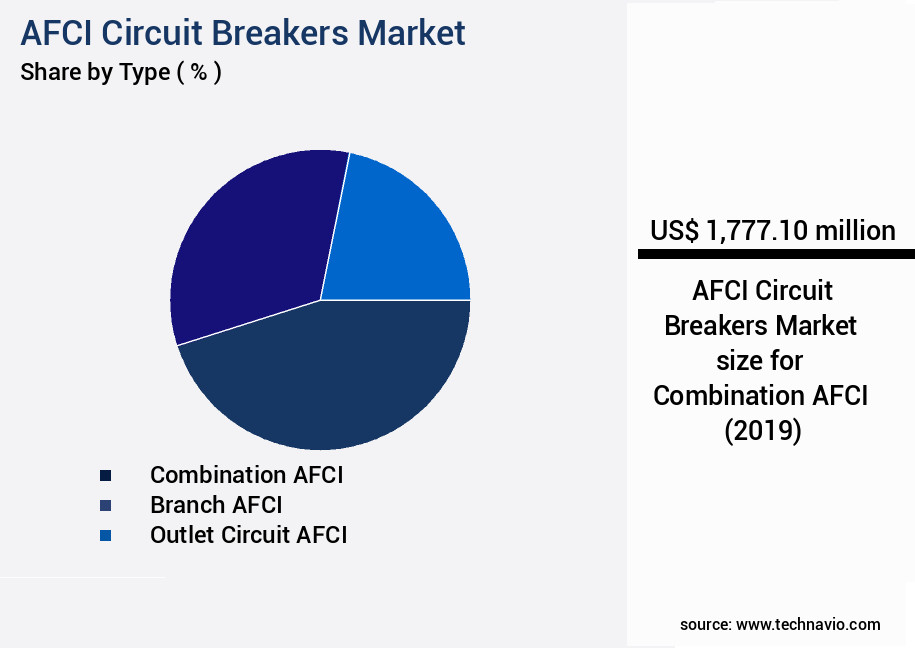
Request Free Sample
The Combination AFCI segment was valued at USD 1777.10 million in 2019 and showed a gradual increase during the forecast period.
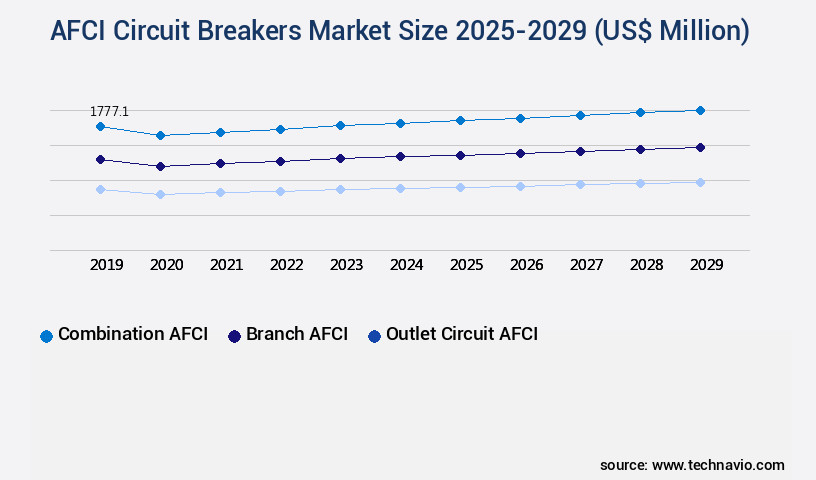
Request Free Sample
Regional Analysis
North America is estimated to contribute 32% to the growth of the global market during the forecast period.Technavio's analysts have elaborately explained the regional trends and drivers that shape the market during the forecast period.
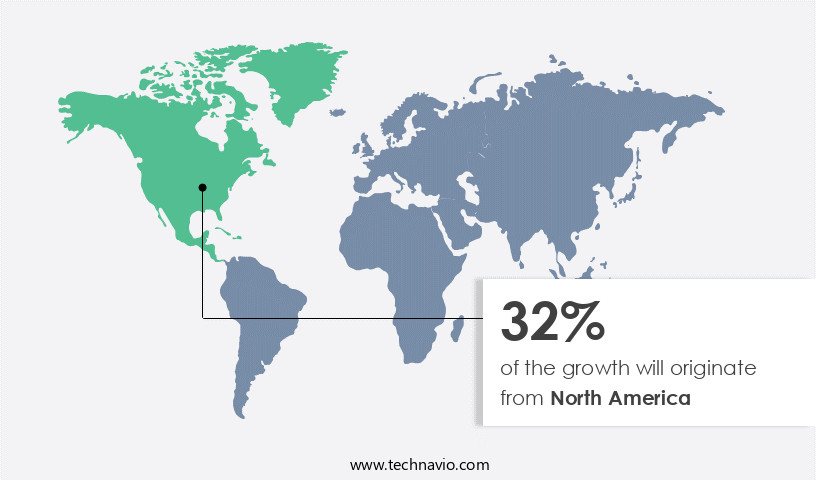
See How AFCI Circuit Breakers Market Demand is Rising in North America Request Free Sample
The market exhibits significant diversity and growth potential, particularly in the Asia Pacific (APAC) region. Fueled by urbanization, new construction activity, and a rising middle class, this market is poised for expansion. In fact, APAC is projected to account for over 50% of the global market share by 2027, according to recent reports. The region's dynamic landscape encompasses both highly developed economies, such as Australia, Japan, and South Korea, and rapidly developing nations like China, India, and Southeast Asian countries.
This diversity introduces a wide regulatory spectrum, ranging from stringent codes in some nations to a near absence of AFCI requirements in others. Despite these variations, the market's underlying drivers remain constant: the need for safer living environments and upgraded building safety standards.
Market Dynamics
Our researchers analyzed the data with 2024 as the base year, along with the key drivers, trends, and challenges. A holistic analysis of drivers will help companies refine their marketing strategies to gain a competitive advantage.
The market has experienced significant growth in recent years due to increasing awareness of electrical safety in both residential and commercial applications. AFCI breakers, also known as arc fault circuit interrupters, are essential components of ground fault protection systems designed to prevent electrical fires. When installing AFCI breakers in residential buildings, it's crucial to consider various factors, such as testing methods for arc fault circuit interrupters and designing effective ground fault protection systems. Proper testing methods are essential to ensure the AFCI breaker is functioning correctly and reducing nuisance tripping. Selecting appropriate AFCI circuit breakers for specific applications is another critical consideration. Understanding the characteristics of AFCI breaker trip curves and their impact on performance is essential to optimizing their placement in electrical panels. Preventing electrical fires is the primary goal of AFCI circuit breakers, and their coordination with other protective devices is essential to ensure electrical safety codes are met.
Comparing AFCI and GFCI circuit breakers' functionalities is necessary when making selections for installation. While both types provide essential protection, they serve different purposes. AFCI breakers protect against arc faults, while GFCI breakers protect against ground faults. Effective strategies for reducing nuisance tripping include practical maintenance procedures and best practices for AFCI breaker selection and installation. Different types of AFCI circuit breakers are available for various applications, and understanding their performance characteristics is essential for improving overall system performance. When designing electrical panels for AFCI circuit breakers, safety guidelines for replacement installations must be followed to ensure electrical safety. Calculating arc flash hazards and ensuring compliance with safety codes are also essential considerations for effective AFCI circuit breaker implementation. Coordination with other protective devices is crucial to ensure all systems work together to provide optimal electrical safety.
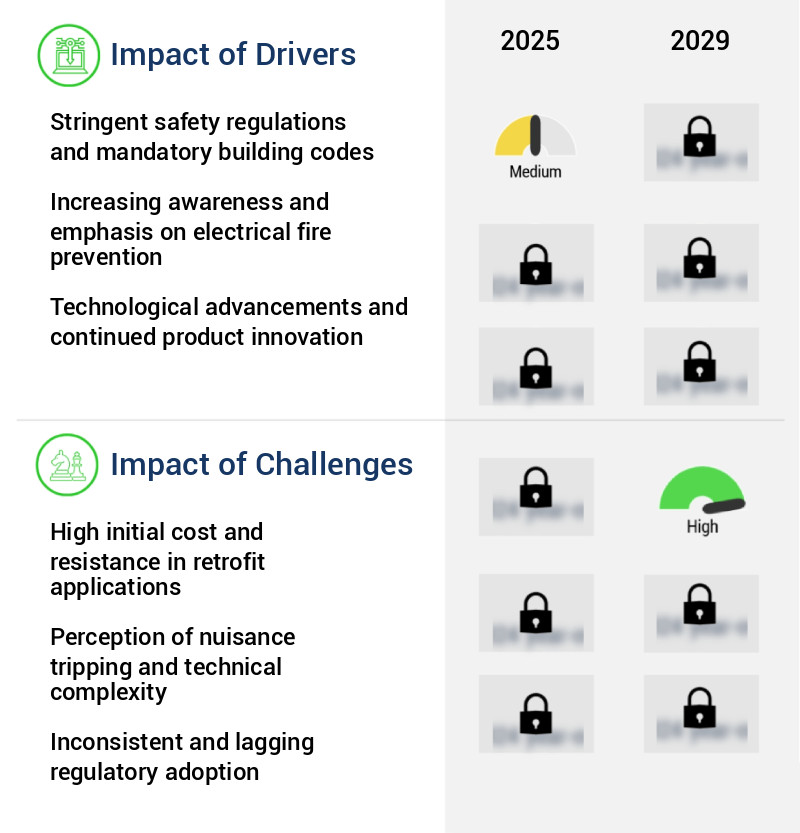
What are the key market drivers leading to the rise in the adoption of AFCI Circuit Breakers Industry?
- Mandatory safety regulations and stringent building codes serve as essential drivers in the market, ensuring compliance and prioritizing safety and structural integrity.
- The market is experiencing significant growth due to the increasing implementation and enforcement of electrical safety regulations and building codes, particularly in North America. Unlike other building components, the adoption of AFCI circuit breakers is largely non-negotiable in new residential construction and major renovations within jurisdictions that have adopted modern electrical codes. The National Fire Protection Association (NFPA) and its National Electrical Code (NEC) have been the primary drivers of this trend. The NEC has progressively expanded its requirements for AFCI protection over successive three-year code cycles.
- According to recent reports, the North American market accounted for approximately 55% of the market share in 2020. Europe followed closely with a 30% share, while the Asia Pacific region held around 15%. These figures underscore the global significance of electrical safety regulations and building codes in driving market growth.
What are the market trends shaping the AFCI Circuit Breakers Industry?
- The trend in the market involves an increasing prevalence of high-load home electrification systems. High-load home electrification systems are gaining popularity in the current market.
- The market is experiencing significant growth due to the increasing trend of home electrification, driven by sustainability initiatives and the shift away from fossil fuels. This shift in electrical load profiles, marked by the widespread adoption of high-draw appliances like electric vehicle chargers, electric heating and cooling systems, and induction cooktops, places new demands on residential electrical systems. These systems, designed for lower and less variable power consumption decades ago, are now at risk of increased wear and arc faults due to continuous, high amperage loads.
- This evolution is not just about adding more circuits; it's about managing new types of loads that can exacerbate aging wiring and components. The market is poised to capitalize on this trend, offering advanced solutions to mitigate arc fault risks and ensure electrical system safety.
What challenges does the AFCI Circuit Breakers Industry face during its growth?
- The high initial costs and resistance to retrofitting are significant challenges that hinder industry growth in this sector.
- AFCI circuit breakers, which automatically disconnect electrical circuits to prevent fires caused by faulty appliances or wiring, have seen increasing adoption across various sectors due to their enhanced safety features. Despite their advantages, the higher unit cost compared to conventional thermal magnetic circuit breakers remains a significant challenge. This price differential, while less pronounced due to manufacturing efficiencies and economies of scale, can still make AFCI devices several times more expensive. This cost barrier is particularly notable in the extensive retrofit market, where property owners must consider the considerable capital outlay for upgrading entire electrical panels with AFCI devices.
- While the benefits of fire prevention are undeniable, the decision to invest in these advanced circuit breakers is often perceived as discretionary, especially in jurisdictions where their use is not legally mandated for older buildings.
Exclusive Technavio Analysis on Customer Landscape
The afci circuit breakers market forecasting report includes the adoption lifecycle of the market, covering from the innovator's stage to the laggard's stage. It focuses on adoption rates in different regions based on penetration. Furthermore, the afci circuit breakers market report also includes key purchase criteria and drivers of price sensitivity to help companies evaluate and develop their market growth analysis strategies.
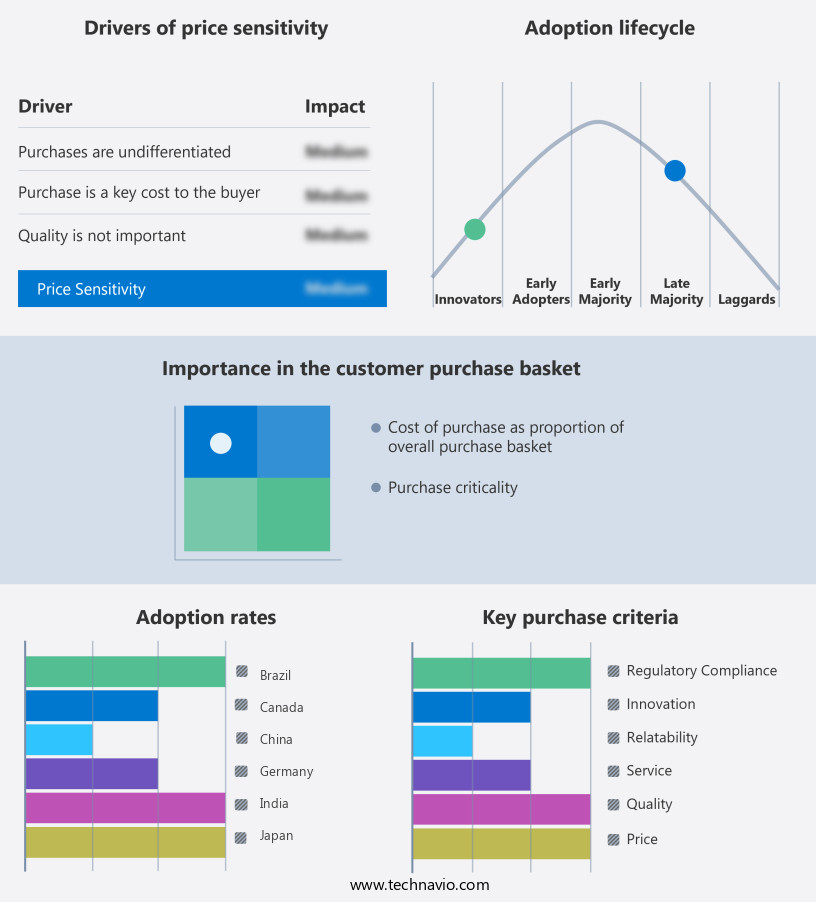
Customer Landscape of AFCI Circuit Breakers Industry
Competitive Landscape
Companies are implementing various strategies, such as strategic alliances, afci circuit breakers market forecast, partnerships, mergers and acquisitions, geographical expansion, and product/service launches, to enhance their presence in the industry.
ABB Ltd. - The company specializes in advanced arc fault circuit interrupters (AFCIs), providing various options such as combination AFCIs, dual function AFCIs (DFCIs), and AFCI advantage products, ensuring electrical safety and compliance with industry standards.
The industry research and growth report includes detailed analyses of the competitive landscape of the market and information about key companies, including:
- ABB Ltd.
- Eaton Corp. plc
- General Electric Co.
- Hager SE
- Hubbell Inc.
- Legrand SA
- Leviton Manufacturing Co. Inc.
- Littelfuse Inc.
- Schneider Electric SE
- Siemens AG
- Zhejiang CHINT Electrics Co. Ltd.
Qualitative and quantitative analysis of companies has been conducted to help clients understand the wider business environment as well as the strengths and weaknesses of key industry players. Data is qualitatively analyzed to categorize companies as pure play, category-focused, industry-focused, and diversified; it is quantitatively analyzed to categorize companies as dominant, leading, strong, tentative, and weak.
Recent Development and News in AFCI Circuit Breakers Market
- In January 2024, Schneider Electric, a global energy management and automation company, announced the launch of its new Masterpact MT AFCI circuit breakers series. These circuit breakers offer enhanced protection against electrical fires, making them an essential addition to the company's electrical distribution offerings (Schneider Electric press release, 2024).
- In March 2024, Siemens and ABB, two leading technology companies, joined forces to develop advanced AFCI solutions for industrial applications. This strategic partnership aimed to combine Siemens' industrial expertise with ABB's automation technology to create more efficient and safer electrical systems (Reuters, 2024).
- In May 2024, Eaton, a power management company, completed the acquisition of Cooper Bussmann, a leading manufacturer of electrical and electronic components. This acquisition expanded Eaton's electrical business and strengthened its position in the market (Eaton press release, 2024).
- In January 2025, the European Union's new electrical safety regulations came into effect, mandating the use of arc fault circuit interrupters in all new residential and commercial buildings. This regulatory approval is expected to significantly boost the demand for AFCI circuit breakers in Europe (European Commission press release, 2025).
Dive into Technavio's robust research methodology, blending expert interviews, extensive data synthesis, and validated models for unparalleled AFCI Circuit Breakers Market insights. See full methodology.
|
Market Scope
|
|
Report Coverage
|
Details
|
|
Page number
|
245
|
|
Base year
|
2024
|
|
Historic period
|
2019-2023 |
|
Forecast period
|
2025-2029
|
|
Growth momentum & CAGR
|
Accelerate at a CAGR of 2.9%
|
|
Market growth 2025-2029
|
USD 673.6 million
|
|
Market structure
|
Concentrated
|
|
YoY growth 2024-2025(%)
|
2.9
|
|
Key countries
|
US, China, India, Canada, Germany, Japan, UK, South Korea, Mexico, and Brazil
|
|
Competitive landscape
|
Leading Companies, Market Positioning of Companies, Competitive Strategies, and Industry Risks
|
Request Free Sample
Research Analyst Overview
- The AFCI circuit breaker market continues to evolve, driven by the increasing demand for electrical system safety and reliability across various sectors. Fault current limiting technology, a critical component of AFCI circuit breakers, plays a pivotal role in preventing electrical shock and arc flash hazards in emergency power systems. Breaker installation methods have also evolved, with arc fault detection and residual current detection becoming standard features in modern electrical panels. Electrical system safety is a top priority, with electrical shock prevention and arc flash mitigation being essential considerations. Ground fault protection and voltage surge protection are integral safety devices, while protective device coordination ensures short circuit interruption and power system stability.
- Parallel circuit protection and thermal magnetic protection are essential for preventing electrical fires and ensuring electrical code compliance. For instance, a recent study revealed that the implementation of AFCI circuit breakers in residential electrical systems resulted in a 75% reduction in nuisance tripping, significantly improving electrical safety. The global AFCI circuit breaker market is expected to grow at a robust rate, reflecting the ongoing unfolding of market activities and evolving patterns. Moreover, wiring configurations, electrical inspection procedures, and circuit breaker testing are essential aspects of electrical safety standards. Series circuit protection, fault isolation techniques, overcurrent protection, and electrical grounding systems are crucial components of electrical safety codes.
- Current transformer usage and branch circuit protection are also vital for ensuring electrical safety in various applications. In conclusion, the AFCI circuit breaker market is characterized by continuous dynamism, with ongoing advancements in technology and evolving patterns driving market growth. The integration of safety devices such as fault current limiting, arc fault detection, and ground fault protection is essential for ensuring electrical system safety and reliability. The market's future outlook remains promising, with industry growth expectations projected to remain strong.
What are the Key Data Covered in this AFCI Circuit Breakers Market Research and Growth Report?
-
What is the expected growth of the AFCI Circuit Breakers Market between 2025 and 2029?
-
What segmentation does the market report cover?
-
The report is segmented by Type (Combination AFCI, Branch AFCI, Outlet circuit AFCI, and Others), Power Rating (Greater than 10A, 10A, and Less than 10A), Application (Residential, Commercial, Industrial, and Others), Distribution Channel (Offline and Online), and Geography (APAC, North America, Europe, South America, and Middle East and Africa)
-
Which regions are analyzed in the report?
-
APAC, North America, Europe, South America, and Middle East and Africa
-
What are the key growth drivers and market challenges?
-
Who are the major players in the AFCI Circuit Breakers Market?
-
ABB Ltd., Eaton Corp. plc, General Electric Co., Hager SE, Hubbell Inc., Legrand SA, Leviton Manufacturing Co. Inc., Littelfuse Inc., Schneider Electric SE, Siemens AG, and Zhejiang CHINT Electrics Co. Ltd.
Market Research Insights
- The market for AFCI circuit breakers is a dynamic and continuously evolving sector, with ongoing advancements in technology driving innovation and growth. Two notable developments include the increasing demand for breaker diagnostic testing to ensure electrical fire safety and the integration of fault detection algorithms into electrical system design. According to industry reports, the market for AFCI circuit breakers is projected to grow by over 5% annually. For instance, the implementation of more stringent electrical safety regulations and the rising adoption of smart grid technologies have led to a significant increase in sales for circuit breaker manufacturers. Moreover, the importance of thermal overload protection in electrical systems has become increasingly apparent, with many organizations investing in panel upgrades to improve overall system performance and reliability.
- This trend is expected to continue, as the need for reliable electrical systems becomes increasingly critical in various industries, from manufacturing to healthcare.
We can help! Our analysts can customize this AFCI circuit breakers market research report to meet your requirements.
Get in touch
1 Executive Summary
- 1.1 Market overview
- Executive Summary - Chart on Market Overview
- Executive Summary - Data Table on Market Overview
- Executive Summary - Chart on Global Market Characteristics
- Executive Summary - Chart on Market by Geography
- Executive Summary - Chart on Market Segmentation by Type
- Executive Summary - Chart on Market Segmentation by Power Rating
- Executive Summary - Chart on Market Segmentation by Application
- Executive Summary - Chart on Market Segmentation by Distribution Channel
- Executive Summary - Chart on Incremental Growth
- Executive Summary - Data Table on Incremental Growth
- Executive Summary - Chart on Company Market Positioning
2 Technavio Analysis
- 2.1 Analysis of price sensitivity, lifecycle, customer purchase basket, adoption rates, and purchase criteria
- Analysis of price sensitivity, lifecycle, customer purchase basket, adoption rates, and purchase criteria
- 2.2 Criticality of inputs and Factors of differentiation
- Overview on criticality of inputs and factors of differentiation
- 2.3 Factors of disruption
- Overview on factors of disruption
- 2.4 Impact of drivers and challenges
- Impact of drivers and challenges in 2024 and 2029
3 Market Landscape
- 3.1 Market ecosystem
- Parent Market
- Data Table on - Parent Market
- 3.2 Market characteristics
- Market characteristics analysis
4 Market Sizing
- 4.1 Market definition
- Offerings of companies included in the market definition
- 4.2 Market segment analysis
- 4.4 Market outlook: Forecast for 2024-2029
- Chart on Global - Market size and forecast 2024-2029 ($ million)
- Data Table on Global - Market size and forecast 2024-2029 ($ million)
- Chart on Global Market: Year-over-year growth 2024-2029 (%)
- Data Table on Global Market: Year-over-year growth 2024-2029 (%)
5 Historic Market Size
- 5.1 Global AFCI Circuit Breakers Market 2019 - 2023
- Historic Market Size - Data Table on Global AFCI Circuit Breakers Market 2019 - 2023 ($ million)
- 5.2 Type segment analysis 2019 - 2023
- Historic Market Size - Type Segment 2019 - 2023 ($ million)
- 5.3 Power Rating segment analysis 2019 - 2023
- Historic Market Size - Power Rating Segment 2019 - 2023 ($ million)
- 5.4 Application segment analysis 2019 - 2023
- Historic Market Size - Application Segment 2019 - 2023 ($ million)
- 5.5 Distribution Channel segment analysis 2019 - 2023
- Historic Market Size - Distribution Channel Segment 2019 - 2023 ($ million)
- 5.6 Geography segment analysis 2019 - 2023
- Historic Market Size - Geography Segment 2019 - 2023 ($ million)
- 5.7 Country segment analysis 2019 - 2023
- Historic Market Size - Country Segment 2019 - 2023 ($ million)
6 Five Forces Analysis
- 6.1 Five forces summary
- Five forces analysis - Comparison between 2024 and 2029
- 6.2 Bargaining power of buyers
- Bargaining power of buyers - Impact of key factors 2024 and 2029
- 6.3 Bargaining power of suppliers
- Bargaining power of suppliers - Impact of key factors in 2024 and 2029
- 6.4 Threat of new entrants
- Threat of new entrants - Impact of key factors in 2024 and 2029
- 6.5 Threat of substitutes
- Threat of substitutes - Impact of key factors in 2024 and 2029
- 6.6 Threat of rivalry
- Threat of rivalry - Impact of key factors in 2024 and 2029
- 6.7 Market condition
- Chart on Market condition - Five forces 2024 and 2029
7 Market Segmentation by Type
- 7.1 Market segments
- Chart on Type - Market share 2024-2029 (%)
- Data Table on Type - Market share 2024-2029 (%)
- 7.2 Comparison by Type
- Chart on Comparison by Type
- Data Table on Comparison by Type
- 7.3 Combination AFCI - Market size and forecast 2024-2029
- Chart on Combination AFCI - Market size and forecast 2024-2029 ($ million)
- Data Table on Combination AFCI - Market size and forecast 2024-2029 ($ million)
- Chart on Combination AFCI - Year-over-year growth 2024-2029 (%)
- Data Table on Combination AFCI - Year-over-year growth 2024-2029 (%)
- 7.4 Branch AFCI - Market size and forecast 2024-2029
- Chart on Branch AFCI - Market size and forecast 2024-2029 ($ million)
- Data Table on Branch AFCI - Market size and forecast 2024-2029 ($ million)
- Chart on Branch AFCI - Year-over-year growth 2024-2029 (%)
- Data Table on Branch AFCI - Year-over-year growth 2024-2029 (%)
- 7.5 Outlet circuit AFCI - Market size and forecast 2024-2029
- Chart on Outlet circuit AFCI - Market size and forecast 2024-2029 ($ million)
- Data Table on Outlet circuit AFCI - Market size and forecast 2024-2029 ($ million)
- Chart on Outlet circuit AFCI - Year-over-year growth 2024-2029 (%)
- Data Table on Outlet circuit AFCI - Year-over-year growth 2024-2029 (%)
- 7.6 Others - Market size and forecast 2024-2029
- Chart on Others - Market size and forecast 2024-2029 ($ million)
- Data Table on Others - Market size and forecast 2024-2029 ($ million)
- Chart on Others - Year-over-year growth 2024-2029 (%)
- Data Table on Others - Year-over-year growth 2024-2029 (%)
- 7.7 Market opportunity by Type
- Market opportunity by Type ($ million)
- Data Table on Market opportunity by Type ($ million)
8 Market Segmentation by Power Rating
- 8.1 Market segments
- Chart on Power Rating - Market share 2024-2029 (%)
- Data Table on Power Rating - Market share 2024-2029 (%)
- 8.2 Comparison by Power Rating
- Chart on Comparison by Power Rating
- Data Table on Comparison by Power Rating
- 8.3 Greater than 10A - Market size and forecast 2024-2029
- Chart on Greater than 10A - Market size and forecast 2024-2029 ($ million)
- Data Table on Greater than 10A - Market size and forecast 2024-2029 ($ million)
- Chart on Greater than 10A - Year-over-year growth 2024-2029 (%)
- Data Table on Greater than 10A - Year-over-year growth 2024-2029 (%)
- 10A - Market size and forecast 2024-2029
- Chart on 10A - Market size and forecast 2024-2029 ($ million)
- Data Table on 10A - Market size and forecast 2024-2029 ($ million)
- Chart on 10A - Year-over-year growth 2024-2029 (%)
- Data Table on 10A - Year-over-year growth 2024-2029 (%)
- 8.5 Less than 10A - Market size and forecast 2024-2029
- Chart on Less than 10A - Market size and forecast 2024-2029 ($ million)
- Data Table on Less than 10A - Market size and forecast 2024-2029 ($ million)
- Chart on Less than 10A - Year-over-year growth 2024-2029 (%)
- Data Table on Less than 10A - Year-over-year growth 2024-2029 (%)
- 8.6 Market opportunity by Power Rating
- Market opportunity by Power Rating ($ million)
- Data Table on Market opportunity by Power Rating ($ million)
9 Market Segmentation by Application
- 9.1 Market segments
- Chart on Application - Market share 2024-2029 (%)
- Data Table on Application - Market share 2024-2029 (%)
- 9.2 Comparison by Application
- Chart on Comparison by Application
- Data Table on Comparison by Application
- 9.3 Residential - Market size and forecast 2024-2029
- Chart on Residential - Market size and forecast 2024-2029 ($ million)
- Data Table on Residential - Market size and forecast 2024-2029 ($ million)
- Chart on Residential - Year-over-year growth 2024-2029 (%)
- Data Table on Residential - Year-over-year growth 2024-2029 (%)
- 9.4 Commercial - Market size and forecast 2024-2029
- Chart on Commercial - Market size and forecast 2024-2029 ($ million)
- Data Table on Commercial - Market size and forecast 2024-2029 ($ million)
- Chart on Commercial - Year-over-year growth 2024-2029 (%)
- Data Table on Commercial - Year-over-year growth 2024-2029 (%)
- 9.5 Industrial - Market size and forecast 2024-2029
- Chart on Industrial - Market size and forecast 2024-2029 ($ million)
- Data Table on Industrial - Market size and forecast 2024-2029 ($ million)
- Chart on Industrial - Year-over-year growth 2024-2029 (%)
- Data Table on Industrial - Year-over-year growth 2024-2029 (%)
- 9.6 Others - Market size and forecast 2024-2029
- Chart on Others - Market size and forecast 2024-2029 ($ million)
- Data Table on Others - Market size and forecast 2024-2029 ($ million)
- Chart on Others - Year-over-year growth 2024-2029 (%)
- Data Table on Others - Year-over-year growth 2024-2029 (%)
- 9.7 Market opportunity by Application
- Market opportunity by Application ($ million)
- Data Table on Market opportunity by Application ($ million)
10 Market Segmentation by Distribution Channel
- 10.1 Market segments
- Chart on Distribution Channel - Market share 2024-2029 (%)
- Data Table on Distribution Channel - Market share 2024-2029 (%)
- 10.2 Comparison by Distribution Channel
- Chart on Comparison by Distribution Channel
- Data Table on Comparison by Distribution Channel
- 10.3 Offline - Market size and forecast 2024-2029
- Chart on Offline - Market size and forecast 2024-2029 ($ million)
- Data Table on Offline - Market size and forecast 2024-2029 ($ million)
- Chart on Offline - Year-over-year growth 2024-2029 (%)
- Data Table on Offline - Year-over-year growth 2024-2029 (%)
- 10.4 Online - Market size and forecast 2024-2029
- Chart on Online - Market size and forecast 2024-2029 ($ million)
- Data Table on Online - Market size and forecast 2024-2029 ($ million)
- Chart on Online - Year-over-year growth 2024-2029 (%)
- Data Table on Online - Year-over-year growth 2024-2029 (%)
- 10.5 Market opportunity by Distribution Channel
- Market opportunity by Distribution Channel ($ million)
- Data Table on Market opportunity by Distribution Channel ($ million)
11 Customer Landscape
- 11.1 Customer landscape overview
- Analysis of price sensitivity, lifecycle, customer purchase basket, adoption rates, and purchase criteria
12 Geographic Landscape
- 12.1 Geographic segmentation
- Chart on Market share by geography 2024-2029 (%)
- Data Table on Market share by geography 2024-2029 (%)
- 12.2 Geographic comparison
- Chart on Geographic comparison
- Data Table on Geographic comparison
- 12.3 APAC - Market size and forecast 2024-2029
- Chart on APAC - Market size and forecast 2024-2029 ($ million)
- Data Table on APAC - Market size and forecast 2024-2029 ($ million)
- Chart on APAC - Year-over-year growth 2024-2029 (%)
- Data Table on APAC - Year-over-year growth 2024-2029 (%)
- 12.4 North America - Market size and forecast 2024-2029
- Chart on North America - Market size and forecast 2024-2029 ($ million)
- Data Table on North America - Market size and forecast 2024-2029 ($ million)
- Chart on North America - Year-over-year growth 2024-2029 (%)
- Data Table on North America - Year-over-year growth 2024-2029 (%)
- 12.5 Europe - Market size and forecast 2024-2029
- Chart on Europe - Market size and forecast 2024-2029 ($ million)
- Data Table on Europe - Market size and forecast 2024-2029 ($ million)
- Chart on Europe - Year-over-year growth 2024-2029 (%)
- Data Table on Europe - Year-over-year growth 2024-2029 (%)
- 12.6 South America - Market size and forecast 2024-2029
- Chart on South America - Market size and forecast 2024-2029 ($ million)
- Data Table on South America - Market size and forecast 2024-2029 ($ million)
- Chart on South America - Year-over-year growth 2024-2029 (%)
- Data Table on South America - Year-over-year growth 2024-2029 (%)
- 12.7 Middle East and Africa - Market size and forecast 2024-2029
- Chart on Middle East and Africa - Market size and forecast 2024-2029 ($ million)
- Data Table on Middle East and Africa - Market size and forecast 2024-2029 ($ million)
- Chart on Middle East and Africa - Year-over-year growth 2024-2029 (%)
- Data Table on Middle East and Africa - Year-over-year growth 2024-2029 (%)
- 12.8 China - Market size and forecast 2024-2029
- Chart on China - Market size and forecast 2024-2029 ($ million)
- Data Table on China - Market size and forecast 2024-2029 ($ million)
- Chart on China - Year-over-year growth 2024-2029 (%)
- Data Table on China - Year-over-year growth 2024-2029 (%)
- 12.9 US - Market size and forecast 2024-2029
- Chart on US - Market size and forecast 2024-2029 ($ million)
- Data Table on US - Market size and forecast 2024-2029 ($ million)
- Chart on US - Year-over-year growth 2024-2029 (%)
- Data Table on US - Year-over-year growth 2024-2029 (%)
- 12.10 India - Market size and forecast 2024-2029
- Chart on India - Market size and forecast 2024-2029 ($ million)
- Data Table on India - Market size and forecast 2024-2029 ($ million)
- Chart on India - Year-over-year growth 2024-2029 (%)
- Data Table on India - Year-over-year growth 2024-2029 (%)
- 12.11 Germany - Market size and forecast 2024-2029
- Chart on Germany - Market size and forecast 2024-2029 ($ million)
- Data Table on Germany - Market size and forecast 2024-2029 ($ million)
- Chart on Germany - Year-over-year growth 2024-2029 (%)
- Data Table on Germany - Year-over-year growth 2024-2029 (%)
- 12.12 Canada - Market size and forecast 2024-2029
- Chart on Canada - Market size and forecast 2024-2029 ($ million)
- Data Table on Canada - Market size and forecast 2024-2029 ($ million)
- Chart on Canada - Year-over-year growth 2024-2029 (%)
- Data Table on Canada - Year-over-year growth 2024-2029 (%)
- 12.13 Japan - Market size and forecast 2024-2029
- Chart on Japan - Market size and forecast 2024-2029 ($ million)
- Data Table on Japan - Market size and forecast 2024-2029 ($ million)
- Chart on Japan - Year-over-year growth 2024-2029 (%)
- Data Table on Japan - Year-over-year growth 2024-2029 (%)
- 12.14 South Korea - Market size and forecast 2024-2029
- Chart on South Korea - Market size and forecast 2024-2029 ($ million)
- Data Table on South Korea - Market size and forecast 2024-2029 ($ million)
- Chart on South Korea - Year-over-year growth 2024-2029 (%)
- Data Table on South Korea - Year-over-year growth 2024-2029 (%)
- 12.15 UK - Market size and forecast 2024-2029
- Chart on UK - Market size and forecast 2024-2029 ($ million)
- Data Table on UK - Market size and forecast 2024-2029 ($ million)
- Chart on UK - Year-over-year growth 2024-2029 (%)
- Data Table on UK - Year-over-year growth 2024-2029 (%)
- 12.16 Mexico - Market size and forecast 2024-2029
- Chart on Mexico - Market size and forecast 2024-2029 ($ million)
- Data Table on Mexico - Market size and forecast 2024-2029 ($ million)
- Chart on Mexico - Year-over-year growth 2024-2029 (%)
- Data Table on Mexico - Year-over-year growth 2024-2029 (%)
- 12.17 Brazil - Market size and forecast 2024-2029
- Chart on Brazil - Market size and forecast 2024-2029 ($ million)
- Data Table on Brazil - Market size and forecast 2024-2029 ($ million)
- Chart on Brazil - Year-over-year growth 2024-2029 (%)
- Data Table on Brazil - Year-over-year growth 2024-2029 (%)
- 12.18 Market opportunity by geography
- Market opportunity by geography ($ million)
- Data Tables on Market opportunity by geography ($ million)
13 Drivers, Challenges, and Opportunity/Restraints
- 13.3 Impact of drivers and challenges
- Impact of drivers and challenges in 2024 and 2029
- 13.4 Market opportunities/restraints
14 Competitive Landscape
- 14.2 Competitive Landscape
- Overview on criticality of inputs and factors of differentiation
- 14.3 Landscape disruption
- Overview on factors of disruption
- 14.4 Industry risks
- Impact of key risks on business
15 Competitive Analysis
- 15.2 Company ranking index
- 15.3 Market positioning of companies
- Matrix on companies position and classification
- 15.4 ABB Ltd.
- ABB Ltd. - Overview
- ABB Ltd. - Business segments
- ABB Ltd. - Key news
- ABB Ltd. - Key offerings
- ABB Ltd. - Segment focus
- SWOT
- 15.5 Eaton Corp. plc
- Eaton Corp. plc - Overview
- Eaton Corp. plc - Business segments
- Eaton Corp. plc - Key news
- Eaton Corp. plc - Key offerings
- Eaton Corp. plc - Segment focus
- SWOT
- 15.6 General Electric Co.
- General Electric Co. - Overview
- General Electric Co. - Business segments
- General Electric Co. - Key news
- General Electric Co. - Key offerings
- General Electric Co. - Segment focus
- SWOT
- 15.7 Hager SE
- Hager SE - Overview
- Hager SE - Product / Service
- Hager SE - Key offerings
- SWOT
- 15.8 Hubbell Inc.
- Hubbell Inc. - Overview
- Hubbell Inc. - Business segments
- Hubbell Inc. - Key news
- Hubbell Inc. - Key offerings
- Hubbell Inc. - Segment focus
- SWOT
- 15.9 Legrand SA
- Legrand SA - Overview
- Legrand SA - Business segments
- Legrand SA - Key news
- Legrand SA - Key offerings
- Legrand SA - Segment focus
- SWOT
- 15.10 Leviton Manufacturing Co. Inc.
- Leviton Manufacturing Co. Inc. - Overview
- Leviton Manufacturing Co. Inc. - Product / Service
- Leviton Manufacturing Co. Inc. - Key offerings
- SWOT
- 15.11 Littelfuse Inc.
- Littelfuse Inc. - Overview
- Littelfuse Inc. - Business segments
- Littelfuse Inc. - Key news
- Littelfuse Inc. - Key offerings
- Littelfuse Inc. - Segment focus
- SWOT
- 15.12 Schneider Electric SE
- Schneider Electric SE - Overview
- Schneider Electric SE - Business segments
- Schneider Electric SE - Key news
- Schneider Electric SE - Key offerings
- Schneider Electric SE - Segment focus
- SWOT
- 15.13 Siemens AG
- Siemens AG - Overview
- Siemens AG - Business segments
- Siemens AG - Key news
- Siemens AG - Key offerings
- Siemens AG - Segment focus
- SWOT
- 15.14 Zhejiang CHINT Electrics Co. Ltd.
- Zhejiang CHINT Electrics Co. Ltd. - Overview
- Zhejiang CHINT Electrics Co. Ltd. - Product / Service
- Zhejiang CHINT Electrics Co. Ltd. - Key offerings
- SWOT
16 Appendix
- 16.2 Inclusions and exclusions checklist
- Inclusions checklist
- Exclusions checklist
- 16.3 Currency conversion rates for US$
- Currency conversion rates for US$
- 16.4 Research methodology
- 16.7 Validation techniques employed for market sizing
- Validation techniques employed for market sizing
- 16.9 360 degree market analysis
- 360 degree market analysis
- 16.10 List of abbreviations







![]() Get the report (PDF) sent to your email within minutes.
Get the report (PDF) sent to your email within minutes.
Complimentary full Excel data with your report purchase.